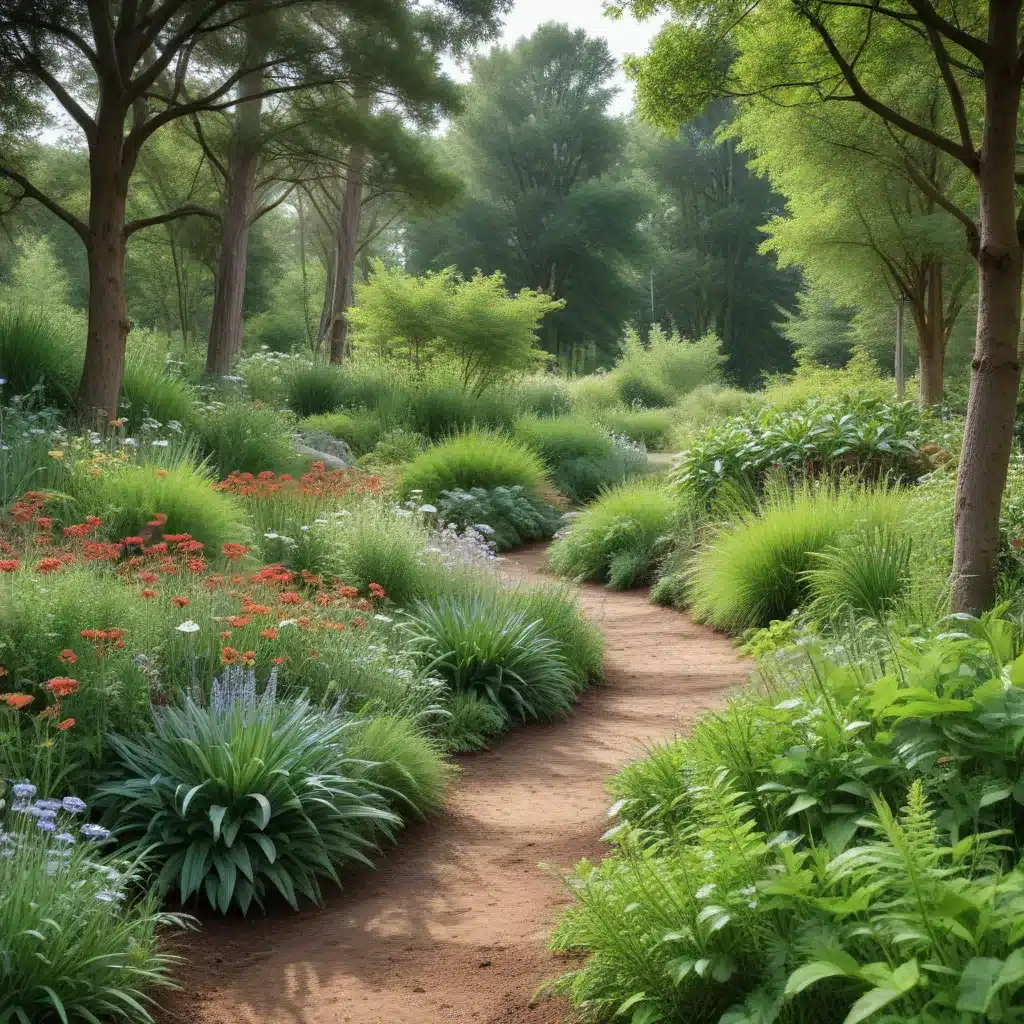
As a tree care specialist at TriCounty Tree Care, I am passionate about empowering homeowners and land managers to create landscapes that nurture and sustain diverse, resilient ecosystems. In an era of unprecedented environmental challenges, the role of thoughtful landscape design cannot be overstated. By strategically incorporating native plants, fostering habitat connectivity, and leveraging ecosystem services, we can transform ordinary yards and green spaces into vibrant biodiversity sanctuaries.
Landscape Design Principles
Habitat Connectivity is a foundational principle of ecologically-minded landscape design. By strategically linking fragmented habitats, we can enable the free movement of wildlife, facilitate genetic exchange, and support the life cycles of threatened and endangered species. This holistic approach considers not only the plants within a given site but also the broader landscape context, identifying critical corridors and stepping stones that allow flora and fauna to thrive.
The selection of native plants is another essential element. Native species are inherently adapted to the local climate and soil conditions, requiring fewer inputs of water, fertilizers, and pesticides. Importantly, native plants also provide the necessary food and shelter resources for a diverse array of native pollinators, birds, and other wildlife. By favoring native plants over exotic ornamentals, we can create verdant, low-maintenance landscapes that support thriving ecosystems.
Thoughtful consideration of microclimatic conditions is equally vital. Factors such as sun exposure, wind patterns, and moisture levels can significantly influence plant growth and wildlife habitat suitability. By observing and incorporating these nuances into the landscape design, we can strategically place species in environments that optimize their performance and ecological functions.
Ecosystem Services
Beyond the inherent beauty of a vibrant, biodiverse landscape, these carefully designed habitats provide a wealth of ecosystem services that benefit both the local community and the broader environment.
Carbon Sequestration is a critical ecosystem service, with trees and other vegetation playing a pivotal role in the global carbon cycle. By strategically incorporating carbon-dense species and maintaining healthy, growing plants, we can enhance the landscape’s capacity to absorb and store atmospheric carbon dioxide, mitigating the effects of climate change.
The support of pollinators is another vital ecosystem service. As populations of bees, butterflies, and other crucial pollinators decline, the creation of pollinator-friendly landscapes becomes increasingly important. By selecting nectar-rich, native flowering plants and providing essential resources like water and shelter, we can nurture thriving pollinator communities that sustain both natural and agricultural ecosystems.
Lastly, the regulation of water flow and infiltration is a crucial ecosystem service in water-stressed regions like the American Southwest. Incorporating water-wise design elements, such as drought-tolerant plants, permeable surfaces, and strategically placed rain gardens, can enhance the landscape’s ability to capture, store, and gradually release water, thereby reducing runoff, erosion, and the strain on municipal infrastructure.
Threatened and Endangered Species
Landscape design can also play a pivotal role in supporting threatened and endangered species. In areas where natural habitats have been fragmented or degraded, thoughtful restoration efforts can provide vital refuges for these vulnerable populations.
Habitat Restoration strategies may involve the reintroduction of native plant communities, the creation of specialized microhabitats, and the removal of invasive species that outcompete native flora and fauna. By meticulously replicating the ecological conditions required by threatened species, we can establish stable, self-sustaining populations within the designed landscape.
In some cases, species relocation may be a necessary conservation strategy, where individuals are carefully transported and reintroduced to suitable habitats. Landscape design can facilitate this process by ensuring that the recipient site offers the appropriate resources, cover, and connectivity to support the long-term survival of the relocated species.
Alongside these active restoration efforts, invasive species management is a critical component of maintaining healthy, resilient ecosystems. By vigilantly monitoring for and promptly removing non-native, aggressive plants and animals, we can safeguard the delicate balance of native communities and prevent the displacement of threatened and endangered species.
Sustainable Land Management
Ultimately, the creation of biodiversity sanctuaries requires a holistic, sustainable approach to land management. This encompasses a range of strategies, from agroecological practices in rural settings to urban greening initiatives in densely populated areas.
In agricultural contexts, the integration of permaculture principles, such as polyculture planting, nutrient cycling, and water harvesting, can enhance the productivity and ecological resilience of working landscapes. By mimicking the structure and functions of natural ecosystems, these practices support thriving communities of beneficial organisms while reducing the reliance on synthetic inputs.
In urban and suburban environments, green infrastructure initiatives, such as the installation of rain gardens, green roofs, and urban forests, can provide vital ecosystem services, including stormwater management, urban heat island mitigation, and the provision of wildlife habitat. By strategically incorporating these elements into the built environment, we can create a harmonious tapestry of nature and human settlement.
Ultimately, the success of these biodiversity sanctuaries hinges on active community engagement and stewardship. By educating homeowners, land managers, and municipal authorities on the importance of ecological landscape design, we can empower them to become active participants in the preservation and enhancement of local biodiversity. Through collaborative efforts and shared knowledge, we can transform ordinary green spaces into vibrant, self-sustaining ecosystems that thrive in harmony with the communities they serve.
At TriCounty Tree Care, we are committed to guiding our clients towards the creation of these biodiversity sanctuaries. By leveraging our expertise in horticulture, arboriculture, and ecological design, we can help you transform your outdoor spaces into havens for native plants, pollinators, and threatened species. Contact us today to learn more about our comprehensive landscape design and management services, and let’s work together to nurture a thriving, resilient future for our local ecosystems.


